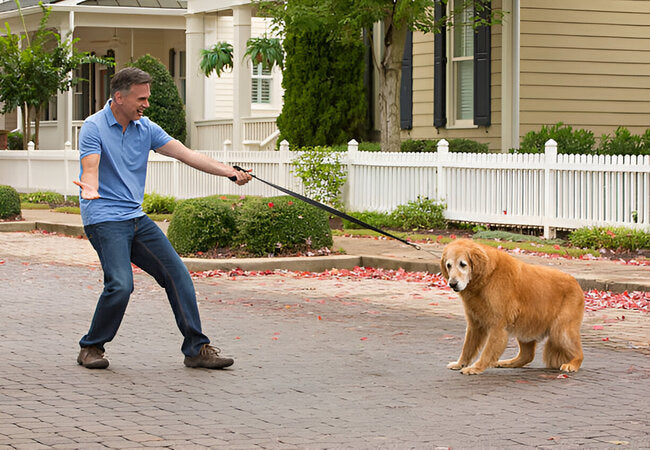2025 Vet Insight: How to Leash‑Train Your Dog—Vet‑Approved Steps 🐶🚶♂️

In this article
2025 Vet Insight: How to Leash‑Train Your Dog—Vet‑Backed Guide 🐶🚶♂️
By Dr. Duncan Houston BVSc
Hello! I’m Dr Duncan Houston BVSc, veterinarian and founder of Ask A Vet. Walking on a loose leash is a foundation of good canine behaviour—it builds safety, trust, and connection. In this comprehensive 2025 insight, we’ll cover every key step to leash train your dog: from choosing equipment, starting indoors, building leash manners, handling pulling and reactivity, to polishing loose-leash walking in real-world settings.
1. Choose the Right Gear 🧷
- Leash: A standard 4–6 ft nylon or leather leash is ideal. Retractable leashes limit control and aren't recommended.
- Collar or harness: For gentle guidance, use a martingale collar or a no‑pull chest harness. Head halters (Gentle Leader) can help strong pullers.
- Avoid choke or prong collars; reward‑based tools are safer and more effective.
2. Introduce the Leash Indoors
Start in a calm, familiar room. Let your pup sniff and wear the leash quietly attached to a harness for a few minutes. Reward them for calm behaviour.
3. Practice Indoor Loose‑Leash Walking
Use small treats to teach “heel” or desired position. Click or mark the moment the leash slackens, and reward immediately.
You can follow techniques like “I Am a Rock” or “Back & Forth” to train pulling prevention.
4. Gradual Outdoor Transition
- Begin in low-distraction areas (e.g., backyard or quiet park).
- Let your pup explore on a 10–30 ft long-line, then gradually gather slack for structured walking.
- Use a marker word and treat for paying attention and keeping the leash loose.
5. Handling Pulling
When your dog pulls, stop walking or turn around (“time-out”). Wait until Slack returns, mark and reward. Avoid tugging or punishing—these may worsen the behaviour.
6. Manage Leash Reactivity
If your dog reacts to people, dogs, or triggers on leash, use desensitization with a buffer zone and high-value treats. Keep the dog below the threshold, mark calm acknowledgement, and gradually decrease the distance.
7. Reinforce in Real‑World Walks
- Gradually introduce distractions—other dogs, traffic, joggers—while rewarding loose walking.
- Keep marker/treat handy; pause and reinforce desired behavior whenever slack leash is maintained.
- Change routes and pace occasionally to keep walks engaging.
8. Troubleshooting Common Issues
- Puppy leash biting: redirect to a toy or continue walking silently to reduce the habit.
- Pulling persists: consider a head halter or a no-pull harness and professional help.
- Pulling worsens: stop walking the moment the leash tightens—help them learn attention precedes forward movement.
9. Building Confidence and Bond
Use leash walks for training/mental enrichment—“sit”, “watch me”, recall games. This creates positive focus and strengthens your relationship.
10. When to Seek Help
- Consistent leash pulling despite training—consider a professional CPDT-KA trainer.
- Leash reactivity with aggression—use behaviorist or Ask A Vet app for structured rehab.
- Health discomfort on walks—veterinary exam may be needed for pain or sensory issues.
🔧 Ask A Vet Tools & Support 🛠️
- 📹 Upload walk videos for leash‑walking feedback
- 🧠 Customized exercise/training plan in-app
- 🎓 Access guided programs for pulling, reactivity, loose-leash basics
- 📈 Track progress in distraction levels and calm walking metrics
🩺 Final Vet Reflection
Leash training builds trust, safety, and joy during walks. With the right tools, reward timing, and gentle corrections, your dog will learn to walk politely by your side, making every outing a rewarding experience. If training stalls or behavior escalates, Ask A Vet is here to support you and your pup every step of the way. 🐾❤️






